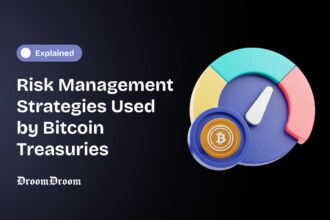In recent times, numerous projects have emerged to completely revolutionize and transform the blockchain sector. Earlier, one of the significant challenges militating against the efficiency of blockchain is segmented cryptoeconomic security. Meanwhile, in Ethereum, every project running was initially responsible for its security which has proven to be ineffective. As more projects begin to deploy to the network, the need for a solution to the challenge becomes more imperative. This thus leads us to the emergence of EigenLayer.
It is worth mentioning that the emergence of EigenLayer has brought about a more reliable and less fragmented cryptoeconomic security on Ethereum. According to our findings, the solution has totally transformed Ethereum owing to its capability to aggregate and fully expand crypto economic security by validating every project running on the network. With this article, users are going to know more about the potential of the scaling solution.
What is EigenLayer?
Developed on the Ethereum network, EigenLayer started the idea of restaking on the network. This thus means users can restake their Ether holdings in a bid to ensure that other projects running on the network enjoy robust cryptoeconomic security. The solution is designed in such a way that it performs the process of restaking automatically, thereby ensuring efficient validation of those applications running on the network.
The assets restaked avails these validation services of the applications. Worthy of note that the EigenLayer protocol uses a smart contract which serves as an enablement for users willing to restake their Ether token for the overall security of the network. The implication of EigenLayer to Ethereum is that it aids its fee system. Since the network gives primary cryptoeconomic security to projects running on its ecosystem, these projects return a determined fee back to Ethereum.
According to our findings, users give EigenLayer enforcement permission on their staked holdings through the protocol’s opt-in middle layer. Granting this permission means users want their staked assets to be restated on other projects running on the Ethereum ecosystem. To achieve this, the solution makes way for partitioning terms on each of the staked assets to complement the demands of these projects. With the determined partitioning terms, EigenLayer is able to implement and establish the right behaviour among the projects. To read more about how to stake your assets, click here.
How Does EigenLayer Work?
How the solution fosters extensive security for projects on Ethereum is not far-fetched. It has been established that the solution provides enablement for ETH stakers to restake their tokens, thereby contributing to the security of projects running on the network. Certainly, the restaked Ether assets bring about an optimal system of pooled security.
For this to manifest, users use the opt-in mechanism enveloped in the solution and consequently okay the slashing terms on their stake. It is worth mentioning that these stakes amass rewards by agreeing to retake their assets. At the moment, the project is yet to have its native token and there are no indications that the protocol will launch a token anytime soon.
Meanwhile, EigenLayer usually leverages other fragmented security mechanisms of projects on the network to aid its effectiveness. Through this, it is able to discourage malicious attacks on those projects because of its cost implications.
The fragmented security pools of these projects are compiled to work together as a unit on EigenLayer. This is unlike before when they exist and run separately. By coming together to foster their security through EigenLayer, the cost of exploiting any of their projects becomes higher. This thus reduces malicious attempts on the network.
Security Issues with EigenLayer
Despite the fact that EigenLayer was developed to foster security, it also has security concerns. Recall that by restaking, users have committed their funds to the protocol. By virtue of this development, the control over those funds lies with Eigen. However, a delay in slashing due to security issues may make users lose a part of their funds.
This means any of the projects relying on the restaked tokens for security might steal the assets. As revealed by Meir Bank, sometimes, the solution delays slashing whenever there is an awaiting governance process to authenticate a slash. The reality about this is that the best use cases for Eigen are projects which possess a lower chance of getting slashed.
Founding Team of EigenLayer

According to our findings, Sreeram Kannan founded EigenLayer. Currently, he serves as the CEO of the protocol. Similarly, Kannan is a director at the blockchain lab of Washington University. In one of his interviews, the CEO spoke about his career and specialization. According to him, most of his research at Washington University dwells on distributed computing, information theory, queuing theory, networking, coding theory, game theory of blockchain systems among others.
Today, EigenLayer has gathered a team of highly skilled and talented professionals. Some of the top members of its team include Chris Dury (COO), Calvin Lui (CSO), Sid Sanyal (VP of Engineering), Brianna Montgomery (Strategic lead) and many more.
Conclusion
It has been established that the EigenLayer solution has transformed Ethereum security system. It provides enablement for the protection of all decentralized applications running on the network. As earlier, asserted, it achieves this by encouraging the restaking of ETH assets by stakers. Meanwhile, these stakers are rewarded for their fees. Although, the protocol is not without its own flaws, it has proven to be more effective than the initial fragmented security framework on the network.
However, following the Shanghai upgrade which introduces validators withdrawals to Ethereum, EigenLayer advised stakes to fully review their withdrawal techniques so as to fully harness the future opportunities enveloped in restaking their ETH assets.
The Shanghai/Capella upgrade brings validator withdrawals to Ethereum. Before changing withdrawal credentials or creating new validators, stakers interested in restaking on EigenLayer mainnet have a few considerations to make. Learn more in this post: https://t.co/481XMK2zgL
1/4
— EigenLayer (@eigenlayer) April 15, 2023


















